Description of the potato variety Latona, features of cultivation and yield
The Latona potato variety, bred by Dutch breeders, quickly gained popularity in the vastness of Russia. The tubers of this variety are highly valued by gardeners and are planted in areas with a predominance of a temperate climate. The highest fruit yield is achieved in the south of the country. This variety is in demand due to the possibility of seed planting, which helps to grow healthy tubers.
Description of the variety
A distinctive feature of the variety is erect bushes and large leaves of rich green color with wavy edges. The tubers have a weight of about 90-130 grams, an oval shape, a smooth surface and a skin with a predominance of yellow tint. Potato blooms are moderate, white flowers form on the bushes. Lush and spreading tops appear at an early stage of maturation and die off for a very long time. One bush can grow about 9-11 root crops, provided it is properly cared for.
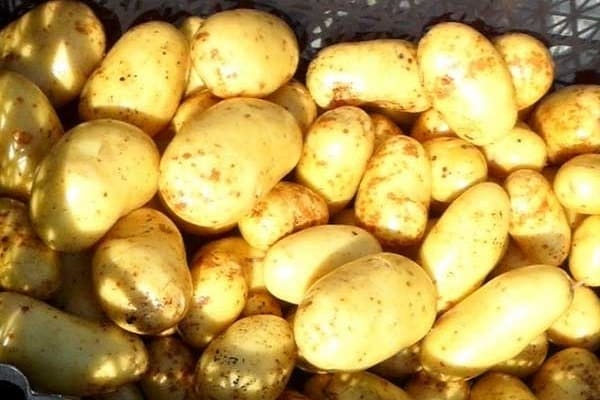
The flesh of the fruit is pale yellow and starchy, due to which the potatoes practically do not crumble during cooking. The starch index is about 20%. The keeping quality of fruits in the absence of condensation at the storage site reaches 85–90%, which allows you to leave a large amount of the harvest for a later period.
Growing
It is necessary to plant Latona potatoes after pumpkin, legumes, cabbage and cucumbers. Before planting, the soil should be treated from infections and pests. In the spring, ammonium nitrate, phosphorus and potash fertilizers, manure, lime are introduced into the soil. The cultivation technology of this variety includes standard procedures: periodic loosening, mulching, watering and fertilizing.
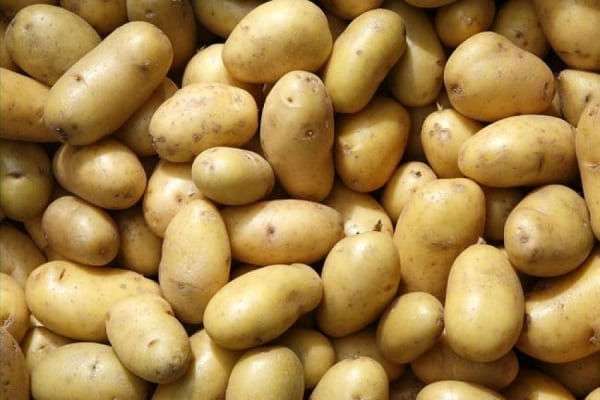
To improve the quality and volume of the crop, a root crop should be planted when the soil warms up to 8-10 degrees. It is necessary to control the density of the placement of the bushes, since rare or very dense plantings prevent proper growth and maturation. The optimum planting depth for prepared tubers is 10 cm.
Care features
Despite the standard techniques of agricultural technology, the characteristics of potatoes involve the observance of a number of features during care. Including:
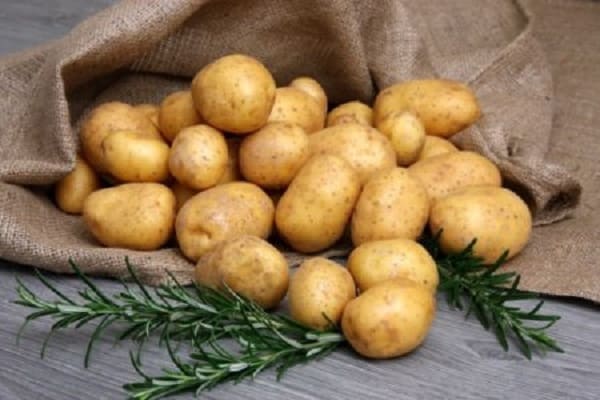
- A week after planting, you need to visually inspect the beds and, if necessary, remove the weeds from the surface.
- During flowering and budding, the plant requires watering to increase the amount of harvest.
- Tubers negatively perceive stagnant melt water, therefore, it is necessary to provide adequate drainage.
- Periodic spraying of the bushes with protective agents helps to exclude the disease with Alternaria and late blight.
- Each watering of the planting field should be accompanied by feeding with organo-mineral components.
Watering the beds during the entire cultivation period is necessary about 2-3 times, depending on how dry the season turned out to be. The main thing is not to water the land immediately after planting, since the soil will be saturated with moisture from the melting of snow in the spring. The first watering is required 15 days after germination. The second watering falls on the flowering of the bushes. The next watering time depends on the degree of soil drought. If the soil is too dry, you can loosen it up as an additional measure.
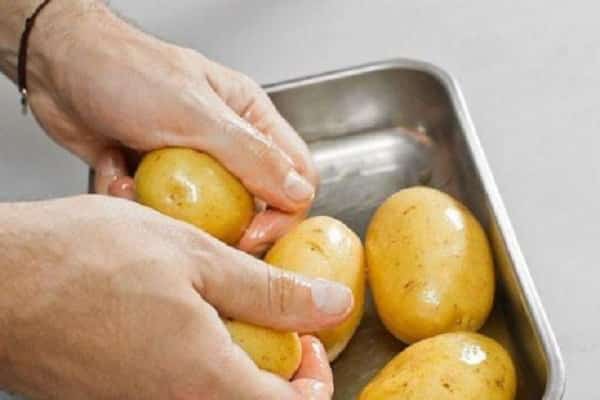
Advantages and disadvantages
The prevalence of Latona is due to the presence of a number of comparative advantages. As the reviews of experienced gardeners say, the main advantages of the plant are as follows:
- Variability of use. Taste qualities and low friability make it possible to use the grown fruits in different dishes. As the description of the variety indicates, the potatoes are not boiled, while becoming soft.
- Yield stability. More than 130 quintals of potatoes can be grown on one hectare of land.
- Ease of growing. Due to being picky about the condition of the soil, resistance to pests and diseases, even novice summer residents can plant a plant.
- Drought tolerant. The plant is immune to weather conditions and adapts well to any climate, which gives a large yield both in arid soil and in high humidity.
- Early maturity. Young potatoes can be harvested a couple of months after planting.
- Marketable condition. Tubers differ from other varieties by their smooth surface and good preservation even after long-term storage or transportation.
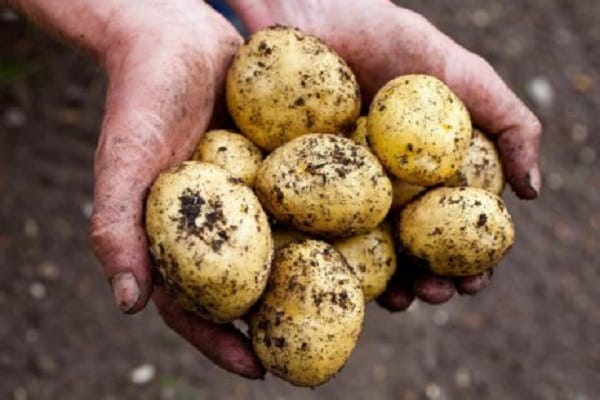
The disadvantages of a plant in most situations are due to inappropriate growing conditions and improper care. Failure to comply with the rules can lead to a decrease in yield and loss of taste.
Pests and diseases
Potatoes of the Latona variety are rarely exposed to diseases, but with improper care and negative climatic conditions, plants can be affected by tuber rot, late blight, cyst nematode and rhizoctonia. In rare cases, gardeners are faced with a leaf-rolling virus on the bushes.
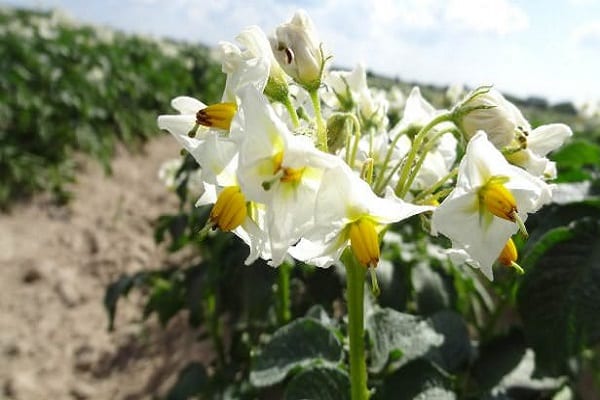
Treatment of a plant to eliminate disease can be done in two ways. The first assumes only a preventive effect and is carried out before disembarkation. The second treatment option has the goal of controlling pests and diseases only when they are directly detected.
For spraying the plant, insecticidal and fungicidal preparations are used.
Sprouted tubers before planting are treated with any disinfectant and heteroauxin to stimulate growth. When processing an already grown bush, you need to use a more concentrated solution and spray it only in cloudy weather or in the evening. If it rains after processing the plant, the procedure should be repeated.
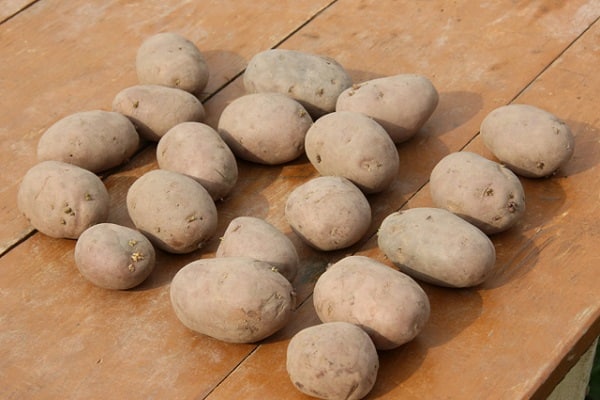
Harvesting and storage
Latona belongs to the early varieties and the first tubers are ready for digging in early July. During this period, the bushes stop blooming and the dense tops wither. Before harvesting, you can check the condition of the tubers and for this remove one bush from the soil. If the fruits have reached three centimeters in diameter, the rest of the crop can be dug up.
The last crop is harvested in the middle of summer, because if the tops are completely withered, then the plant is no longer fruitful.
The exact harvest time depends on the terrain and climatic conditions where the potatoes are planted. In the southern area, the fruits can stay in the soil for a long time and not deteriorate, and in the north, even late-ripening tubers are harvested only at the beginning of autumn. When harvesting, you need to carefully dig in the ground with a pitchfork and pull the bushes by the leaves.
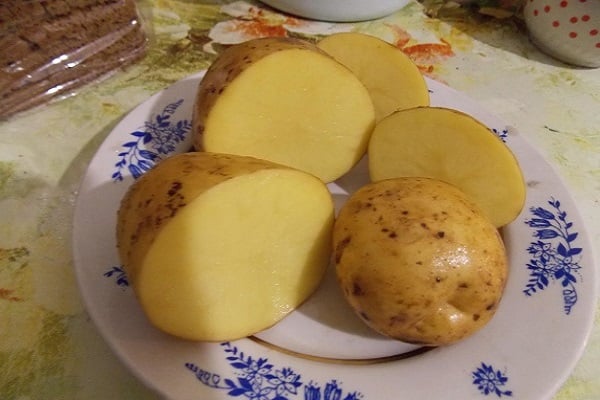
To get more harvest, it is recommended not to immediately collect the dug tubers, but to put them next to the hole. This method will help you find the most productive bushes.
Gardeners reviews
For several years now I have been growing only this variety. Mainly due to the fact that you do not have to carefully care for the seedlings. I encountered pests a couple of times, but they did not affect the harvest in any way.
I read a lot about the Latona variety and for the first time decided to plant it in my country house. The first crop was harvested in three months. I would like to note the pleasant taste and large size of the tubers.

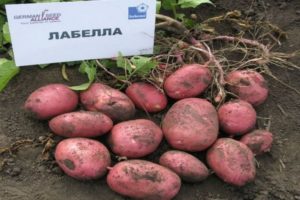
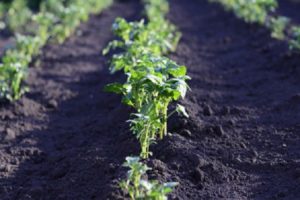

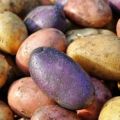


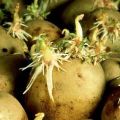
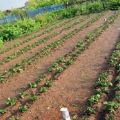

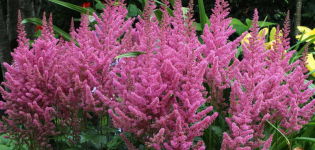
I completely agree, well, I still feed it additionally BioGrow, during plant growth, to increase the potato. At first I thought it was nonsense, but only after I checked, the result was not long in coming. Bushes during budding are high, 35-45 centimeters, strong stems. On average, one bush contains 400-1200 grams of potatoes. The result is amazing.